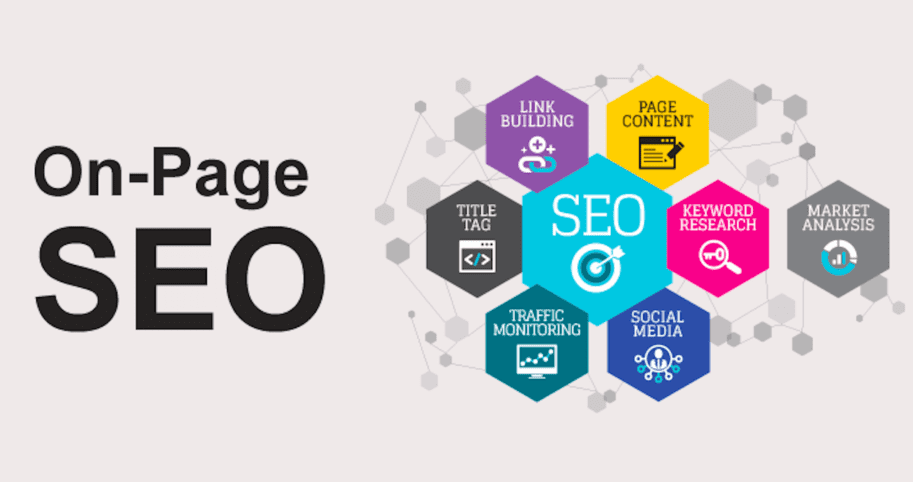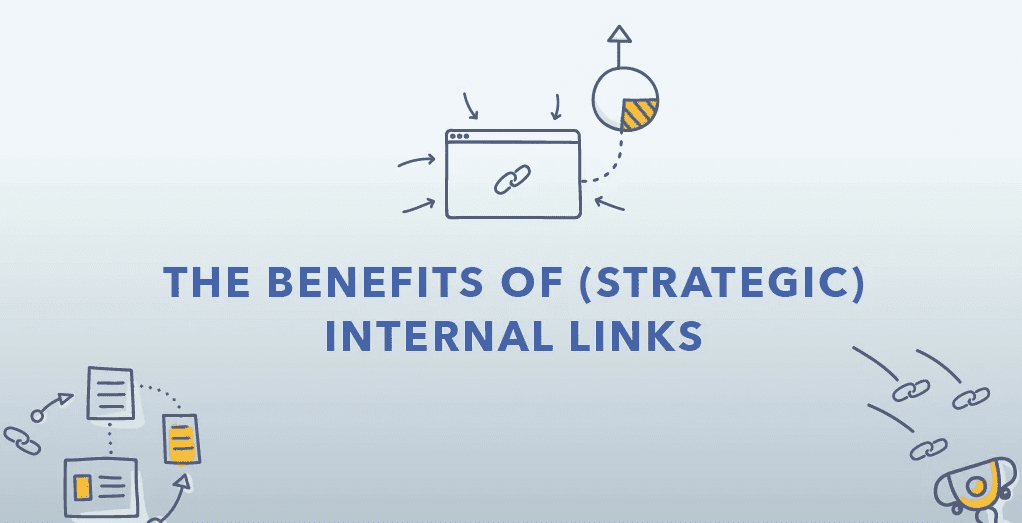On-page SEO refers to the optimization efforts made directly on a website to improve its search engine visibility and rankings.

Here are some key steps you can take for effective on-page SEO:
- Keyword Research:
- Identify relevant keywords for your content.
- Use tools like Google Keyword Planner, SEMrush, or Ahrefs to find high-performing keywords.
- Title Tags:
- Create unique and compelling title tags for each page.
- Include your target keyword within the title tag.
- Keep it under 60 characters to ensure it displays well in search results.
- Meta Descriptions:
- Craft meta descriptions that accurately summarize the content.
- Include your target keyword naturally.
- Limit meta descriptions to around 155-160 characters.
- URL Structure:
- Create clean and user-friendly URLs.
- Include the target keyword in the URL.
- Avoid using symbols, numbers, or irrelevant characters in URLs.
- Header Tags (H1, H2, H3, etc.):
- Use header tags to structure your content.
- Include your target keyword in the main heading (H1).
- Use subheadings (H2, H3, etc.) to organize content logically.
- Keyword Placement:
- Naturally, incorporate your target keyword throughout the content.
- Ensure a good balance to maintain readability and avoid keyword stuffing.
- Quality Content:
- Create valuable, relevant, and engaging content.
- Answer user queries and provide comprehensive information.
- Aim for content that encourages users to spend more time on your site.
- Images Optimization:
- Use descriptive file names for images.
- Add alt text to describe images for search engines and accessibility.
- Internal Linking:
- Link to other relevant pages within your website.
- Use descriptive anchor text for internal links.
- Helps search engines understand the structure of your site.
- Page Speed:
- Optimize images and use compression techniques.
- Minimize CSS, JavaScript, and HTML files.
- Use browser caching to improve page load times.
- Mobile Optimization:
- Ensure your site is mobile-friendly (responsive design).
- Google prioritizes mobile-friendly sites in search rankings.
- Social Media Integration:
- Share your content on social media platforms.
- Social signals can indirectly impact search engine rankings.
- User Experience (UX):
- Provide a clear and intuitive navigation structure.
- Optimize for a positive user experience to reduce bounce rates.
- Schema Markup:
- Implement schema markup to provide additional context to search engines.
- Regularly Update Content:
- Keep content fresh and up-to-date.
- Regular updates show search engines that your site is active.
Frequently Asked Question: On-page SEO
- What is on-page SEO? On-page SEO refers to the optimization techniques implemented directly on a website to improve its visibility and ranking on search engine results pages (SERPs). This includes optimizing content, HTML source code, and other web page elements.
- Why is on-page SEO important? On-page SEO is crucial because it helps search engines understand the content and relevance of your web pages, which ultimately impacts your website’s ranking and visibility in search results. Proper optimization drives organic traffic, increases engagement, and enhances user experience.
- What are some key elements of on-page SEO? Key on-page SEO elements include optimizing title tags, meta descriptions, headings, URL structure, image alt attributes, internal linking, content quality, keyword usage, and page loading speed.
- How can I optimize title tags and meta descriptions for on-page SEO? Title tags should be concise and descriptive and include relevant keywords. Meta descriptions should accurately summarize the page’s content and entice users to click through. Both should be unique for each page and within recommended character limits.
- What role do keywords play in on-page SEO? Keywords are fundamental as they help search engines understand the topic and relevance of your content. Conducting keyword research to identify relevant terms and strategically incorporate them into your content, headings, and meta tags is essential.
- How does content quality impact on-page SEO? High-quality, relevant, and engaging content not only satisfies users but also helps search engines recognize your website’s value. Content should be well-written, informative, and address the needs of your target audience while incorporating relevant keywords naturally.
- Why is mobile optimization important for on-page SEO? With the increasing use of mobile devices, search engines prioritize mobile-friendly websites. Mobile optimization ensures your site is accessible and performs well on various devices, leading to better user experience and improved SEO performance.
- What is the significance of internal linking in on-page SEO? Internal linking helps search engines discover and index other pages on your website while distributing link equity. It also enhances website navigation for users, encouraging them to explore more content and improving overall site authority.
- How can I optimize images for on-page SEO? Optimizing images involves using descriptive filenames, adding alt attributes with relevant keywords, and ensuring appropriate image sizes to improve page loading speed. This helps search engines understand the content and enhances accessibility for visually impaired users.
- What tools can I use to analyze and improve on-page SEO? Several tools can help analyze and optimize on-page SEO, including Google Search Console, Google Analytics, SEMrush, Moz, Ahrefs, and Yoast SEO plugins (for WordPress users). These tools provide insights into keywords, website performance, errors, and opportunities for improvement.
By implementing these on-page SEO best practices, you can improve your website’s visibility in search engine results and provide a better experience for your visitors. Remember that SEO is an ongoing process; staying updated with industry trends is crucial.

